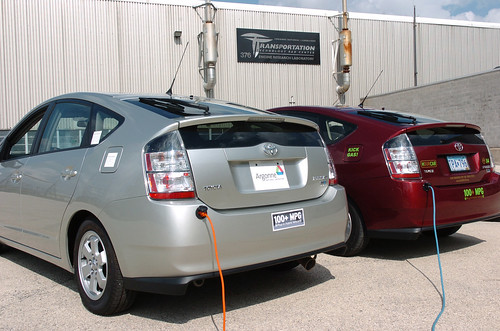“Greener Aviation” Technologies and Alternative Fuels Head AIAA List of Top 10 Emerging Aerospace Technologies
(Source: Green Car Congress)

Image: via Apture
Off late, there is a big push within the Aviation industry towards a “greener future.” More airlines are starting to test technologies and tweak approaches (such as use of biofuels) to attract the environmentally-conscious consumer. According to 700-page Stern Report on the economics of climate change, CO2 emissions from aviation are about 600-700 megatonnes per year, or about 2-3% of total global CO2 emissions. Giovanni Bisignani, IATA’s Director General and CEO, in his State of the Industry address at the 65th IATA Annual General Meeting and World Air Transport Summit in Kuala Lumpur said the international airline industry is committed to achieving carbon-neutral growth by 2020.
Amdist all the buzz and fervor building up around the greening of aviation, the American Institute of Aeronautics and Astronautics (AIAA), the world’s largest technical society dedicated to the global aerospace profession, with more than 35,000 individual members worldwide, and 90 corporate members, has released its first annual list of top emerging aerospace technologies. Developed by AIAA’s Emerging Technologies Committee (ETC), the 2009 list comprises the following:
- “Greener Aviation” Technologies, including emission reduction and noise reduction technologies as usedin the Federal Aviation Administration’s Continuous Low Emissions, Energy and Noise (CLEEN) program, and the European Environmentally Friendly Engine (EFE) program and “Clean Sky” Joint Technology Initiative.
- Alternative Fuels, including biofuels, as promoted by the FAA’s Commercial Aviation Alternative Fuels Initiative (CAAFI), and the recent FAA grant to the X Prize Foundation to spur development of renewable aviation fuels and technologies.
- High Speed Flight Technologies, such as supersonic and hypersonic aerodynamics, sonic boom reduction technology, and thermal management aids.
- Efficient Propulsion Technologies, including open rotors and geared turbofans, such as those used in the European DREAM (valiDation Radical Engine Architecture systeMs) program.
- Active Flow Technologies, such as plasma actuators.
- Advanced Materials, such as nanotechnology and composites.
- Active Structures, such as shape memory alloys, morphing, and flapping.
- Health Management, such as monitoring, prognostics, and self-healing.
- Remote Sensing Technologies, including unmanned aerial vehicles and satellites such as those used inNASA’s Global Earth Observation System of Systems (GEOSS) program.
- Advanced Space Propulsion Technologies, including plasma-based propulsion such as the Variable Specific Impulse Magnetoplasma Rocket, and solar sail technologies.
AIAA’s list reflects the expertise of the members of the Emerging Technologies Committee, as well as the results of a specially commissioned study. The ETC is composed of three technical subcommittees: Aviation, Space, and Multidisciplinary and System Technologies. ETC chair Dan Jensen stated, “The list provides guidance to AIAA for its institute development strategy, while helping shape the annual input AIAA provides to the United States Air Force Scientific Advisory Board. The technologies listed represent the aerospace technologies in which research and technology development is most active from a global perspective.”








